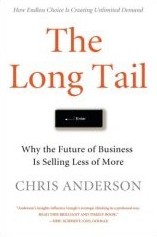I was very surprised that Richard Dawkins can be so passionate in evolution and courageous in taking on religions as entrenched as Christianity and Muslim. This is a very enlightening book. I can not think of more scientific ways of taking on religions as Dawkins did. He made his arguments clearly and based on scientific evidences, which is a quite a different approach than most religion’s leap-of-faith approach.
The author presents the “God Hypotheses” in great lengths from polytheism, monotheism, secularism, to agnosticism (1 to 7 scale). I never knew there were so many kinds of belief systems out there. This was educational. The author went on to poke holes/fun at each of arguments for God’s existence: 1) The unmoved mover, 2) the uncaused cause, and 3)Cosmological argument, 4) the argument from degree, 5) the Teleological Argument, Argument from Design, 6) the argument from beauty, 7) the argument from personal “experience”, 8 ) the argument from scripture, 9) the argument from admired religious scientists. 10) Pascal’s wager – nothing to lose, and 11) Bayesian arguments.
Next, the author made some strong points in arguing that why there almost is no God. The irreducible complexity was used to argue that God itself doesn’t pass the same test. He also advocated strongly that Darwinian evolution by natural selection – a slow and gradual process from the simple beginning – is the only thing, so far, that can explain things scientifically and logically.
Mr. Dawkins then speculated the roots of religion. Why something as “wasteful” as religion did not get eliminated by Darwin’s imperative? There must be direct advantages of religion: 1) group selection, 2) a by-product of something else, 3) psychologically primed, 4) cargo cults. But could we be moral/good without religion? Yes, because our moral standard (zeitgeist) is moving forward even when religion has not changed for over 2000 years.
Mr. Dawkins made a very convincing argument that we must raise the consciousness and do not allow our children to be locked into religion without understanding it or truly believing in it. On this, I strongly agree as I’m the “victim” of being born into a Christian without my own conviction. This is a form of child abuse, according to the author.
The contradiction of the bibles are new and very interesting to me. The brutality of God did not come across to me before especially the mentioning of the gang rape of women and poor treatment of women. The stories mentioned in the Old Testament was new to me; I guess my pastor was selective in teaching us about them. Mr. Dawkins did not advocate that we throw away the “Good” book but rather treating it as a literature reference.
As far of God’s role in “filling the gap.” The author argued that religion at “one time or another been thought to fill four main roles in human life;” explanation, exhortation (moral instruction), consolation and inspiration. None of which must be filled by “God” as argued by the author.
At the end, Mr. Dawkins urged the readers to open up our window of Burkas. There are more to meet the eyes than what the religion can tell us. Keeping an open mind to what science can offer will keep us from the trap of religion. Of course, there are still many things that can not be explained by science yet.
A good book to read that offers an opposing view is “Godless” by Ann Coutler. I wish I read this book immediately after reading “Godless” book. Like Mr. Dawkins, Ms. Coutler made good arguments against the evolutionist, most of which have been torn to pieces by Mr. Dawkins, thanks to being published later than “Godless.”
The book is a bit hard to read at times unless you’re familiar with the Bible and some background in science. The author made many references to many books, which were used to make his argument for or against. This may be reason why Evolution would have a hard time being sold to the general population – the science is too “thick.” On the other hand, Jesus may have a better, easier-to-understand stories to most people.
Nevertheless, this book opened my eyes to the possibility of seeing things as evidenced. I utterly enjoyed this book. I look forward to reading more about evolution and Mr. Dawkins’ publications.




